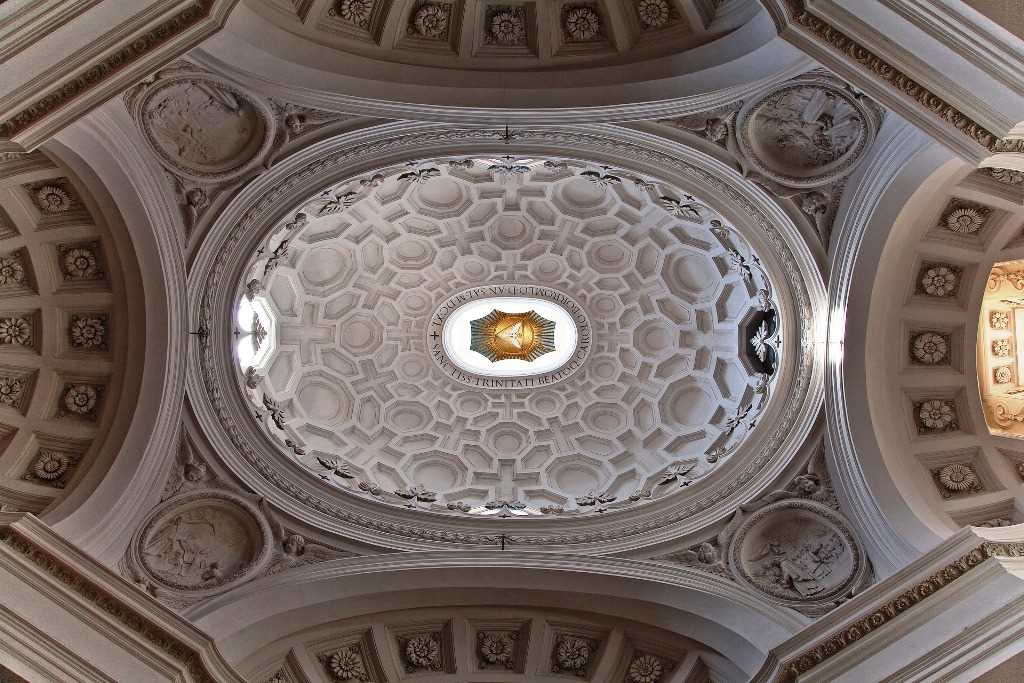Baroque architecture has always had a very special charm. It is the particular type of artistic expression from the 17th century that followed the Renaissance and Mannerism. At the time, it was not a term considered positive, but expressions that were not particularly regular, sober and orderly were defined as Baroque. Most neoclassicists, probably influenced by rational Enlightenment thinking, defined them thus giving them a negative connotation.
The aim of Baroque architecture was in fact to amaze the viewer with very sinuous shapes and vivid colours. However, in some countries such as France, England and later also Italy, the influence of ancient and Renaissance styles can be observed. The period in which this tendency seems most evident has been defined as Baroque classicism. However, there are currently several conflicting theses regarding the origin of this style, but they are not the subject of this article.
There is a lot of information online about the Baroque style but not everyone knows (and I can tell you this from personal experience) that the Baroque is a movement that was born in Rome and that for the entire duration of the seventeenth century, was the protagonist in the art of this wonderful city. It was strongly stimulated by the desire of the patron Popes to express the will of a Lutheran counter-reformation and specifically, for churches to follow the dictates explicitly expressed in the Council of Trent.
Many years have passed since I was amazed by this style at a young age. I was in Rome and decided to follow a tour that would show me some examples of this brazen artistic expression that I loved so much. When it is possible and if you are a site, I urge you to leave your cave, village or city for a while to enjoy it too. The world is a wonderful place and it is a pity to reduce it only and exclusively to your own micro reality.
Baroque church tours in Rome
There are countless tours that can be purchased or done independently. Some of these last just a few hours, others may even last more than a day. I recommend that you consider a paid tour with professional guides, after all, this is one of those things you don’t do every day. In this regard, you only have to look around on search engines to get the chance to book some (depending on the current situation of course). What I recommend, however, is the following.
Start from Piazza Navona, which is universally recognised as the most beautiful Baroque square. The church of Sant’Agnese in Agone, the church of Sant’Ivo alla Sapienza, the church of Sant’Andrea al Quirinale, the church of San Carlo alle quattro fontane, the Ponte Sant’Angelo, the church of Santa Maria della Vittoria, the church of San Francesco a Ripa, the Galleria Borghese, the church of San Luigi dei francesi, the basilica of Santa Maria del Popolo, the Capitoline museums, the national gallery of ancient art in Palazzo Barberini, the basilica of Sant’Andrea della Valle, the church of Sant’Ignazio, the church of Santa Maria della pace and the basilica of San Giovanni dei fiorentini.
A reflection
This short and incomplete tour leads us to think that the style of a church cannot be traced back only and exclusively to the date of its first construction. In fact, the oldest buildings have always undergone modifications and restorations that allow us to appreciate a great variety of styles even in a single structure.
Baroque churches in Rome
The tour I proposed earlier is not the only one you can take, however. For those who do not know Rome and for those who are greedy for information, I repeat that you should rely on a professional guide. There are many Baroque churches, chapels and basilicas in Rome, and this cannot be an exhaustive article. However, in our humble opinion, we will list the most interesting ones.
Basilica of San Giovanni Battista dei Fiorentini
Basilica of Sant’Andrea della Valle
Basilica of Sant’Andrea delle Fratte
Basilica of Sant’Eustachio
Basilica of Santa Maria in Domnica
Church of Saints Claudio and Andrea dei Borgognoni
Church of the Most Holy Name of Mary in the Forum Trajan
Church of San Carlo ai Catinari
Church of San Carlo alle Quattro Fontane
Church of San Luigi dei Francesi
Church of St. Nicholas of Tolentino
Church of Sant’Agnese in Agone
Church of Sant’Andrea al Quirinale
Church of Sant’Ignazio di Loyola in Campo Marzio
Church of Sant’Ivo alla Sapienza
Church of Santa Maria dei Miracoli
Church of Santa Maria di Loreto
Church of Saint Susanna at the Baths of Diocletian
New Church
Dome of St Peter’s
Basilica of Santa Maria sopra Minerva
Oratory of the Filippini
Enjoy your trip!
Our roundup of baroque churches in Rome ends here. If I have not made any mistakes, by visiting them you will be able to appreciate at least one element of this fabulous style. Remember that in the article I have attached the google maps that give you the possibility to reach the place by navigator, look at the photographs, the images, the other places of interest and eventual necessities that are nearby. Plan your trip well before you leave.


